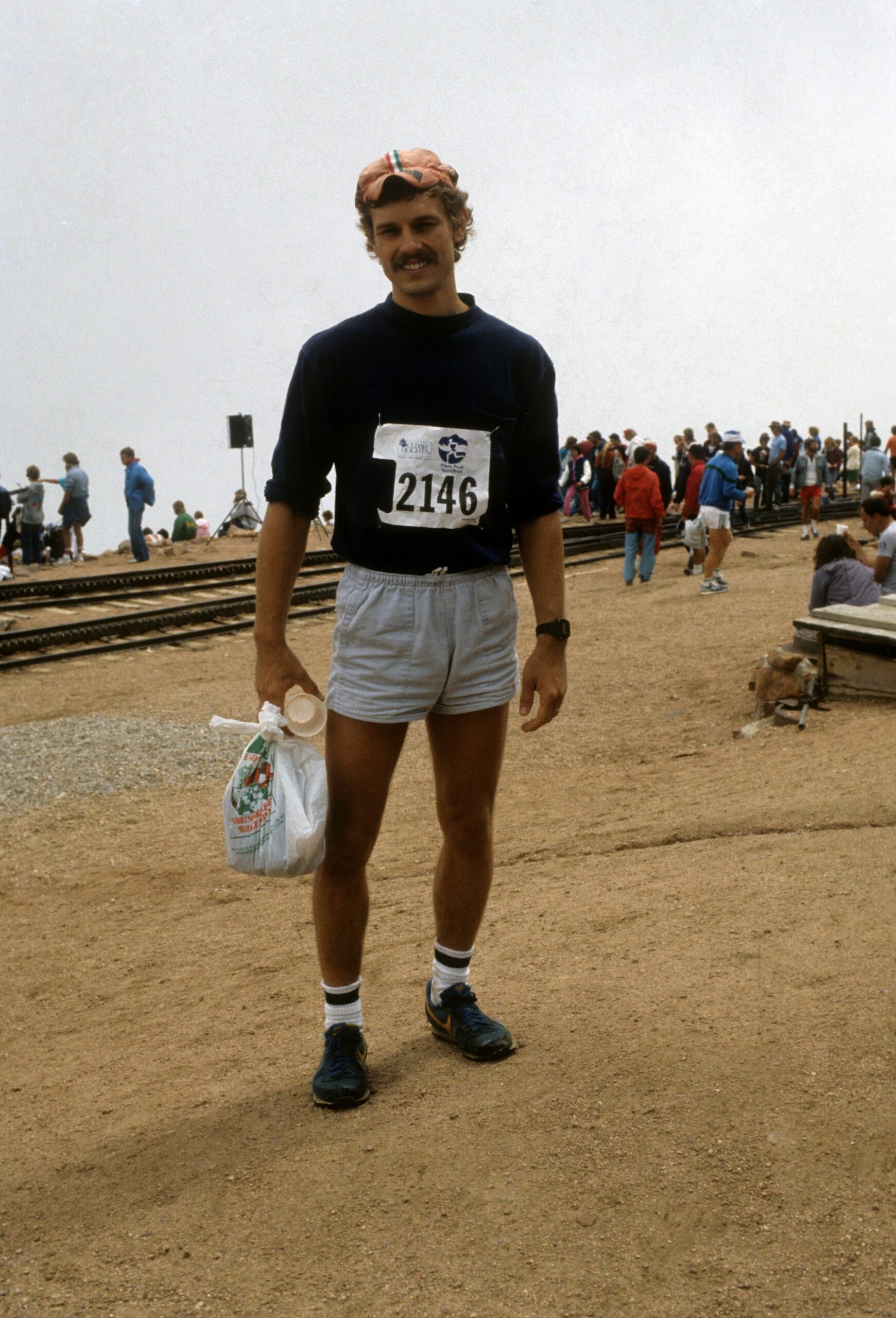What are you racing for?
Fun? Fast time? Beat people? Dig deep and see what’s inside? Test fitness?
To beat the clock or other folks–train better, race smarter, pace evenly. Decide on your race goal and plan your tactics to achieve it. Visualize successfully using those tactics in your training
Eating
- Carbohydrate and fat is used for running. Carbs are stored as glycogen, fat is stored as fat!
- The harder you run the more carb you use and the slower you run the more fat you use. Breaking down fat requires more energy and is less efficient. Feeling a big slowdown in a race—your body switched over to fat burning to a greater degree due to glycogen depletion. Better training means better use, restocking and conservation of glycogen.
- 28oz of drink per hour at 4%-8% carbohydrate—practice!
- The cardinal rules of prerace eating: Stick to familiar foods, and emphasize carbohydrates. The latter is true for every day, of course, but before a race of 90 minutes or longer, it takes on added importance because you want to fill your glycogen storage tank to “full.”
- “For breakfast and lunch the day before a race, don’t eat any more or any less than you normally would, but be sure you’re getting plenty of carbohydrates,” “Stick to what you’ve tried and what works for you.”
- The safest bet is to eat an early and relatively light dinner with an emphasis on easily digestible foods like carbohydrates (pasta, potatoes, or rice) and lean proteins (poultry, fish, or eggs). “High-fat and high-fiber foods stay in the gut longer,” says Clark, “so steer clear of them the night before a race.” These foods include burgers, beans, whole-wheat products, and most dairy products.
- Drink–The best strategy is to drink juice or a sports drink (for their electrolyte content) hourly, then stop drinking an hour before bedtime. Coffee and alcoholic beverages can disturb your sleep, and cause other problems, so it’s best to avoid them.
Kristine Clark, Ph.D., R.D., Penn State University’s director of sports nutrition.
Tapering
Rest well to run well!
- 3 weeks before a marathon and a few days before short races
- can cut back by 60% with no decrease in running performance
- rule of thumb is one day of taper for each 2k of race
- reduce mileage by about 50% and incorporate faster work, like 400’s at 5K pace
The Day Before
Physical preparation: A walk, walk/jog, or easy run the day before a race will keep your muscles limber. Don’t do too much, however, or you’ll fatigue those muscles. Twenty or 30 minutes is plenty.
Mental preparation: Mentally “rehearsing” a race will ease your jitters. This will be easier, especially if you’re unfamiliar with the route, if you drive the course (or at least the hills or last few miles). Find a course map or directions on the race entry form or Web site, set your trip odometer on 0.0 at the start, and take note of the location, length, and steepness of all hills as you drive. Also, record the mileage points of major intersections and landmarks en route so you can divide the course into segments, making it easier to devise a race plan.
Even if you don’t drive the course, set aside time for a mental dress rehearsal. You can do this on your run, or even on the couch. Imagine yourself at the 1-mile, halfway, and last-mile points. What are your goal times at each spot? If you’re too slow or too fast, what is your plan: speed up, maintain, or slow down? By anticipating all reasonable scenarios, you won’t be caught off guard.
Before a race, the key is to think only positive thoughts,” says Frank Webbe, Ph.D., a Florida sports psychologist and marathoner. “If a negative thought intrudes, immediately replace it with a positive thought. This is called ‘thought stopping.’ For example, think about what a beautiful day it is, or how fit and healthy you are, or start a conversation with another runner.”
What to Wear
- Along with overeating, overdressing is the most common of all mistakes. You should feel chilly at the starting line, because once you begin running, your inner furnace will click on.
- Above 50 degrees: Shorts, singlet or short-sleeve T-shirt,
- 35 to 50 degrees: Shorts, short-sleeve or long-sleeve T-shirt, lightweight gloves.
- Below 35 degrees: Tights, long-sleeve T-shirt and vest or jacket, gloves, breathable hat or earmuffs.
- On chilly days, your inner layers should consist of synthetic-blend materials that wick moisture and prevent chafing.
- Clean/new socks
- Consider compression sleeves/socks
Bodyglide on any questionable areas to eliminate chafing and PAIN
Race Day Checklist
- Hat
- Cell phone
- Change of clothes, socks, and shoes
- Nutrition/fuel
- Entry form
- Extra shoelaces
- Full water bottle or sports drink
- Lubricant
- Money
- Racing shoes
- Sunglasses
- Timing chip, if any, secured on race shoes
- Toilet paper
- Towels
- Water-resistant sunscreen (SPF 15+) if sunny
Basic Do’s & Don’ts:
- DO pack your race bag the day before.
- DO find out about the course.
- DO drink plenty of fluids.
- DO mentally rehearse your race plan and always think POSITIVE
- DO set two alarms.
- DON’T tire yourself out with activities.
- DON’T try unfamiliar foods.
- DON’T tolerate negative thoughts about the race.
- DON’T overeat on race morning.
- DON’T overdress.
Warmup
- Shorter race more warmup, longer race less
- Want to increase metabolic rate to levels they will be near start of race
- Get to race pace quickly without lactate buildup
- For 5k to15K start about 45 minutes ahead
- Range of motion drills
- Run 1-2 miles slow to start and gradually build pace to tempo pace for the last 1/4 mile
- Stretch for 10-15 minutes easily—hold for 5 seconds and repeat 4-5 times for each critical muscle group-be conservative in the stretch
- Rehearse The Race
- “Visualization before your race will prime your body for action and make it more likely that you’ll perform like you did in your mental imagery,” says Udewitz. Picture yourself at different stages of a race: getting through a difficult mile, passing runners comfortably, finishing smooth and strong. Time Savings: 10 to 20 seconds
- With 15 minutes to go, put your racing shoes on, double tie the laces, take clothing layers off and run easily again for a few minutes
- With 5-7 minutes to go, run several 100 meter strides/accelerations up to race pace
- Get your watch ready
- Wish your fellow runners a good race
- You are ready to fly!
- Racing
- Even Pacing
- Best way to run your fastest time—economical and less lactate buildup
- Ex—Geb’s 10,000 world record, 2 13:11 5K’s
- Know your pace
- Maintain race discipline
- Know splits and check against watch
- Also the best way to beat other runners
- Will catch folks who started too fast and maintain over slow starters
- Run The Course –jog the course a day or two before the race if possible. Note the location of turns, hills, and water stations. “The familiarity will help you feel confident.”
- Be flexible and adaptable
- Start slower on a hot day
- Run with others, esp. on a windy day—cuts wind resistance
- “Don’t let others dictate your pace or your race plan,” says Daniels.
- Might need to surge a bit to catch someone
- Run Tangents –run the shortest When you stray from those lines, you’re actually adding to the distance of the race. Carve your way through the course, “cutting the tangent” of each turn.
- Be relaxed—you can go faster when relaxed. Reduce tightness in face and shoulders. Be calm and cool especially when passing!
- Look up and be aware. Maintain posture and form
- Form and posture is great to concentrate on for maintaining pace
- Grabbing cups, pinch the top together to form a spout. You’ll be able to sip, spill-free, without slowing or stopping
- Call hills “Friend,” not “Foe” –repeat silently to yourself “this hill is a welcome relief”–and you might just get to the top faster and in better form.
- Pass with authority and don’t look back
- Run through the finish —Remember how you’ve been pushing hard past the line during all those speed workouts? Here’s why.
Some tricks
- I have a mantra “fit, fast, strong” (or some other positive thought) that I coordinate with my breathing. It works for me. Try your own mantra! Rhythmic breathing is a key racing technique!
- Focus on form
- Think in smaller chunks—I can keep the pace to there! Then try another spot further ahead.
- Faster arms make faster legs—think leg speed not stride length
- Relax arms and face
- Try to catch the person up ahead and draft while recovering
- Think light and springy, just tapping the ground with your footstrikes
- Change speeds to refocus and change muscle groups
- Think best effort today! Time or place might not be great but your effort can always be great!!
- Cool down: Easy running for 1-3 miles, or a brisk walk (except after a marathon! Easy walking is fine then.
Text was gleaned from several websites, books and personal experience. Feel free to ask for sources.


